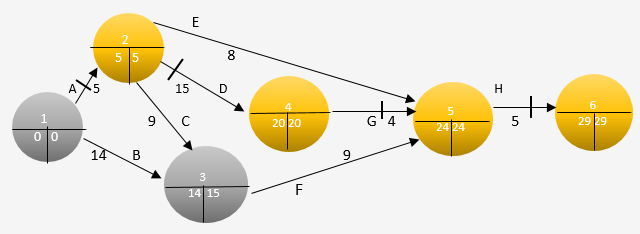Contribution = Sp - Vc
| Type of pen |
Contribution per unit |
|
Sh |
| P1 |
200 - 100 = 100 |
| P2 |
200 - 80 = 120 |
| P3 |
200 - 60 = 140 |
π = Total contribution - Total fixed cost
| Pay off table |
| Law(L) |
Moderate(M) |
|
High(H) |
| Decision alternative |
(250,000) |
(1,000,000) |
(1,500,000) |
| P1(250,000) |
23,000,000 |
-50,000,000 |
-100,000,000 |
| P2(100,000) |
26,800,000 |
116,800,000 |
60,000 |
| P3(1,500,000) |
29,000,000 |
134,000,000 |
204,000,000 |
W1
(P
1L)(250,000 × 100) - 2,000,000 = 23,000,000
(P
1M)(250,000 × 100 - 2,000,000) - (750,000 × 100 - 2,000,000) = -50,000,000
(P
H)(250,000 × 100 - 2,000,000) - (1,250,000 × 100 - 2,000,0000) = -100,000,000
(P
2L) (250,000 × 120) - 3,200,000 = 26,800,000
(P
2 M) (1,000,000 × 120) - 3,200,000 = 116,800,000
(P
2H) [(1,000,000 × 120) - 3,200,000] - [500,000 × 120 - 3,200,000] = 60,000,000
(P
3L)(250,000 x 140 - 6,000,000) = 29,000,000
(P
3M)(1,000,000 x 140 - 6,000,000) = 134,000,000
(P
3H) (1,500,000 × 140 - 6,000,000) = 204,000,000
(ii) The type of pen to produce using the maximum criterion
The minimum of each row;
P1 = Sh-100,000,000
P2 = Sh.26,800,000
P3 = Sh.29,000,000
Therefore the maximum -Sh. 29,000,000 for P
3
Hence, the company should produce type 3 pen so as to maximize profit.
(iii) The type of pen to produce using the maximax criterion:
The maximum of each row:
P
1 = Sh 23,000,000
P
2 = Sh.116,800,000
P
3 = sh.204,000,000
Therefore the maximum of maximum is Sh 204,000,000; for P
3
Hence, the company should produce type 3 pen so as to maximize profit
(iv) The type of pen to produce using the minimax regret criterion
Constructing an opportunity loss table by deducting each payoff under each of the states of
nature that is demand, from the maximum payoff under each of the given states of nature or
demand. This gives an opportunity loss table as shown below
| DEMAND |
|
|
Low |
Moderate |
High |
| Decision alternative |
P1 |
6,000,000 |
184,000,000 |
304,000,000 |
| P2 |
2,200,000 |
17,200,000 |
144,000,000 |
| P3 |
0 |
0 |
0 |
The maximum request under each decision alternative
P1 = Sh. 304,000,000
P2 = Sh. 144,000,000
P3 = Sh. 0
Based on the minimax regret criterion, therefore the company should produce type3 pen so as to
minimize the opportunity loss i.e maximum regret under the various states of demand.








